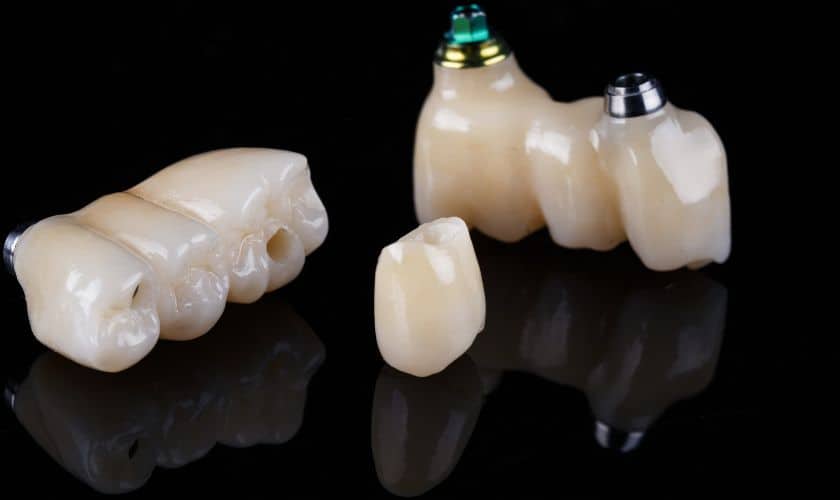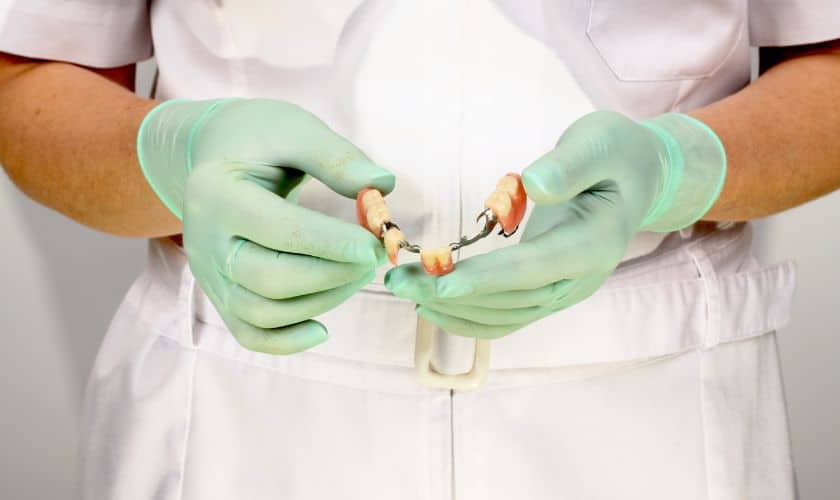Visit Diamond Lakes Dental Today Or Call 501-623-7113
How Dental Crowns and Bridges Renew Your Smile: Bridging the Gap

A radiant smile is not only a source of confidence but also vital for overall oral health. Unfortunately, factors such as decay, injury, or missing teeth can mar your smile and impact your ability to chew and speak comfortably. That’s where dental crowns and bridges come into play, offering a way to renew your smile and restore both function and aesthetics. In this article, we will explore how these dental marvels work to bridge the gap in your smile.
Understanding Dental Crowns
Dental crowns, often referred to as caps, are custom-made covers that encase a damaged or weakened tooth. They serve several essential functions in dental restoration.
1. Protection and Reinforcement
When a tooth is significantly decayed, cracked, or weakened due to extensive dental work or injury, it becomes vulnerable. Dental crowns provide a protective barrier around the damaged tooth, preventing further deterioration and reducing the risk of tooth loss.
2. Restoration of Functionality
A compromised tooth can hinder your ability to bite and chew properly. Dental crowns restore the functionality of your tooth, allowing you to enjoy your favorite foods without discomfort.
3. Aesthetic Enhancement
Crowns are crafted to match the color and shape of your natural teeth, ensuring a seamless and aesthetically pleasing appearance. They are an excellent solution for improving the look of discolored, misshapen, or severely stained teeth.
The Crown Placement Process
The process of getting a dental crown typically involves two visits to your dentist.
- Preparation: During the first visit, the dentist prepares the tooth by removing any damaged or decayed portions. The tooth is then reshaped to accommodate the crown. An impression of the tooth is taken to create a custom crown that fits perfectly.
- Placement: Once the crown is ready, usually within a few weeks, you return to have it placed. The dentist secures the crown over your prepared tooth using dental cement, ensuring a secure and durable bond.
Bridging the Gap with Dental Bridges
When one or more adjacent teeth are missing, it can affect your bite, speech, and smile. Dental bridges are a solution designed to “bridge” the gap created by missing teeth.
1. Tooth Replacement
Dental bridges consist of one or more artificial teeth (pontics) held in place by dental crowns on the adjacent natural teeth or dental implants. This arrangement effectively replaces the missing teeth, restoring both function and appearance.
2. Improved Chewing and Speaking
Missing teeth can make chewing and speaking difficult. Dental bridges restore your ability to eat comfortably and pronounce words correctly, enhancing your overall quality of life.
3. Prevents Shifting
When a tooth is missing, the neighboring teeth may gradually shift into the gap, causing misalignment. Dental bridges prevent this by filling the space and maintaining proper tooth alignment.
The Bridge Placement Process
Getting a dental bridge typically involves multiple visits to your dentist.
- Initial Assessment: Your dentist assesses your oral health and discusses the best type of bridge for your situation.
- Preparation: If dental crowns are necessary to support the bridge, the adjacent teeth are prepared similarly to the process for single crowns.
- Impressions: Impressions are taken to create a custom bridge that fits your mouth perfectly.
- Temporary Bridge: While your permanent bridge is being fabricated, you may receive a temporary bridge to protect your exposed teeth.
- Placement: Once the custom bridge is ready, it is cemented into place, and any necessary adjustments are made to ensure a comfortable fit.
Longevity and Maintenance
Both dental crowns and bridges are durable and can last many years with proper care. To maintain their longevity:
- Practice good oral hygiene by brushing, flossing, and using an antimicrobial mouthwash regularly.
- Visit your dentist for regular check-ups and cleanings to detect any issues early.
- Be mindful of avoiding habits like teeth grinding and using your teeth as tools, as these can damage crowns and bridges.
Conclusion
Dental crowns and bridges are remarkable solutions for renewing your smile and improving Teeth health. Crowns protect and strengthen damaged teeth while enhancing their appearance, while bridges fill gaps created by missing teeth. Whether you need a single crown or a full bridge, these restorative treatments can restore your smile, allowing you to eat, speak, and exude confidence once again. If you’re dealing with damaged or missing teeth, consult your dentist to explore how dental crowns and bridges can bridge the gap to a healthier, happier smile.


